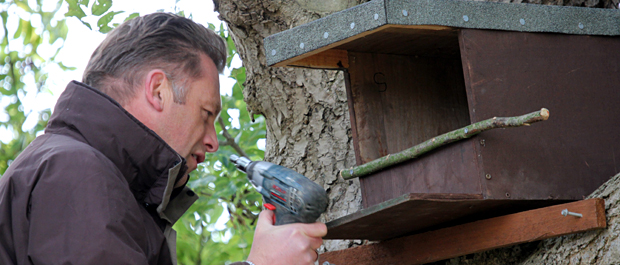
Teams of local businesses were tasked with erecting 106 artificial Kestrel nest boxes over a 48 hour period.
The Kestrel is one of Britain’s most popular birds of prey and is often seen hovering close to motorways and verges. Since the mid-20th century the Kestrel population has been in decline, which in some areas has been by as much as 25%, due to areas of suitable habitat becoming progressively limited. In addition to habitat pressures, nest site availability can also be a limiting factor for bird of prey populations. However, this limitation can be addressed by the provision of artificial nest boxes in areas of suitable, protected habitat.
The Nest Box Challenge, was the brain-child of Trust Executive Life President, Ashley Smith, and it was run in conjunction with a four year study on Kestrel populations by Trust Conservation Biologist, Dr Matt Stevens.
The study aims to determine the reasons for the decline in Kestrel numbers and implement conservation measures to help increase the population into the future.
It’s hoped that half of the boxes will be used by wild kestrels next breeding season and even more by the following year.